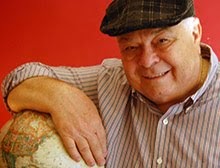 |
| Spectacular Fireworks at the Fete de Geneve |
The event
traces its history to 1923 when flower decorated cars drove through the city.
Though the floral parade never developed to the level of the Tournament of
Roses in Pasadena
After World
War II, the Fete de Geneve expanded to four days, but it did not capture the
hearts of the people of Geneva Lake Geneva nearly a
month-long celebration.
 |
| Geneva's English Garden |
Pre-festival
activities take place in the city’s English
Garden
Celebrations
last into the wee hours of the morning, but by sunrise the city is once again
clean as a whistle. In typical Swiss fashion, it’s as though a team of
nocturnal elves descended upon Geneva
 |
| Shooting for the stars at the Fete de Geneve |
For all the
festivities however, the closing fireworks are what capture the imagination,
and well they should.
One reason
for the success of the spectacular hour-long sky-show is Geneva
 |
| Geneva's flower clock |
As home of
the International Red Cross (the Red Cross flag is the reverse of the Swiss
flag), Geneva is a global city situated at the
western end of the Lake
of Geneva
The city
wraps around both shores of the lake in the French-speaking region of Switzerland
The Fete de
Geneve offers a new dimension in fireworks technology; a symphony for the
heavens that seems to outdo itself each year. The viewing area for the
spectacle is tucked along the shore of the French side of the lake. Seats are available for 50, 60 or 70 Swiss francs,
which is between 50 and 70 dollars. Loudspeakers surround the seating area for
visitors to witness the fireworks and hear the music that are synchronized
within 1/10th of a second by the computers that operate show.
 |
| Starbursts over Lake Geneva |
Nearly
600,000 awed spectators will be dazzled by pyrotechnics from some 40 firing
stations lining the shores of the lake that cover nearly 300,000 square feet. Swiss
fireworks experts from Pyrostars and Sugyp, have designed a program called Man and Time that ranges from
astronomical observations of antiquity, the sun dial, the hour glass and the
clepsydra, to church tower clocks and grandfather clocks, wall clocks and
watches, chronometers and the atomic clock.
People
without seats can see the show from the street and listen to the music on a
local FM radio station.
The Swiss
side of the lake provides the backdrop for the display. All lights along the
shoreline are turned off, creating a jet-black curtain for the spewing fiery
stars that illuminate the night sky. Don’t be late because you can set your
watch by the ten o’clock start of the display that is guaranteed take your
breath away.
(Video of Geneva's fireworks by copying and pasting)
In the
event your vacation plans do not allow you to be in Geneva Geneva
Tickets can
be reserved at Fnac, an international ticket service, either in person or online
at their website. Tickets are also available at the Geneva Tourist Office, Rue
du Mont-Blanc 18 in Geneva or they can be
purchased in the English
Garden
Add this
event to your traveler’s bucket list and witness the skies over Lake Geneva burst into stunning arrays of man-made
shooting stars. It is truly unforgettable.
(Author’s
note: If you watch the video that
accompanies this story, the most spectacular portion of the fireworks happen
approximately three minutes into the program. Be aware that the music is difficult to hear because the
microphones were not patched into the sound system. No matter, the visuals speak for themselves.)



























